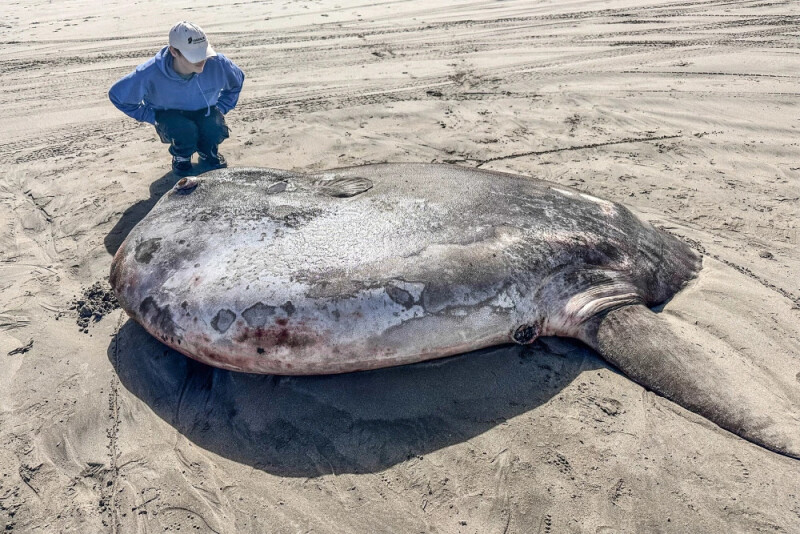A giant species of fish that was first discovered seven years ago washed ashore in Oregon last week, according to marine biologists who study the animal.
Beachgoers in Gearhart, a small town just south of the Washington border, found the 7.3-foot-long hoodwinker sunfish, also called a mola tecta, on June 3.
The species was first discovered in 2017 and has been occasionally spotted near Australia, New Zealand and the Pacific Northwest. It’s recognizable by a thick flap of skin in place of a tail, which is split in two.
When Keith Chambers, the general manager at Seaside Aquarium in Oregon, first received reports of a circular, gray fish on the beach, he assumed it was a run-of-the-mill ocean sunfish.
“I’ve seen a lot of them,” he said. “It wasn’t that spectacular of a moment for me.”
But marine biologist Marianne Nyegaard noticed something unique in the aquarium’s Facebook photo showcasing their finding — the fish had smooth skin and a two-part tail. She identified the fish as a mola tecta, a species she discovered and has been researching since.







